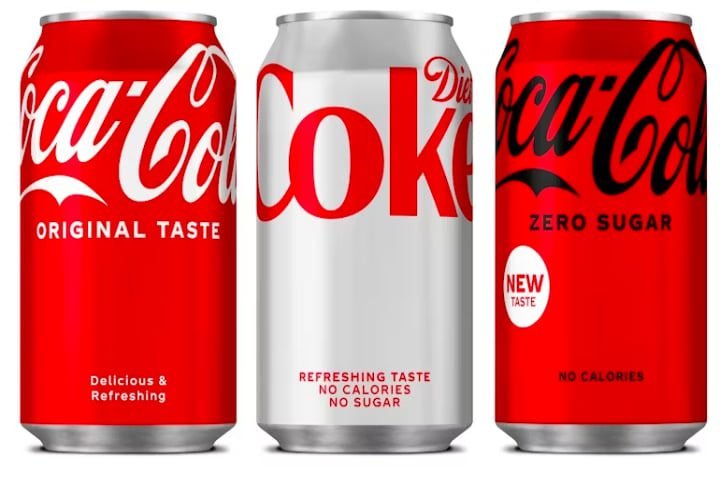1. Brand Building: The Key to Business Success
Building a strong brand is not just a choice in today’s very competitive business world; it’s an absolute must. A strong brand can help your business stand out from others in the same field, build customer trust, and lead to growth and success.
In This Article
It is much easier for a business to run smoothly when its brand values are clear and widely shared. They also show what the business stands for and how it can get to where it wants to be.
Scott Bedbury, CEO of Brandstream, ex-vice President of Starbucks and ex-head of the Advertising team of Nike; suggests that:
Organizations try to differentiate themselves from competitors and brands do that better than anything else.
Relevance and Resonance
The brand building goes beyond a mere logo, slogan, or marketing campaign. It’s about crafting a unique identity that resonates with the target audience.
To succeed, it is critical to establish a clear set of brand values that serve as the foundation for the business. These values should guide internal operations and also communicate the company’s essence to the outside world.
Branding is the art of taking something common and making it more valuable.
- Differentiation: Brands are instrumental in setting your business apart from the competition. Take Starbucks, for instance. In a world full of coffee shops, Starbucks has created a brand that makes a simple cup of coffee into an experience by providing a sense of sophistication and community.
- Trust-Building: Over time, brands build trust by consistently delivering on their promises. When a customer chooses a product or service associated with a brand, they trust the quality and values it represents. Nike’s promise of “authentic athletic performance” has built unwavering trust among athletes and fitness enthusiasts.
- Invaluable Asset: A brand is not something one can outsource; it’s one of the most valuable assets a company possesses. Protecting and nurturing the brand should be a top priority.
A brand is the sum of good, bad, ugly, and off-strategy. It is defined by good products, bad products, good employees, nerds, award-winning campaigns, awful advertisements, receptionist to caller tune, and every public statement made by the CEO or a customer on the wall of Facebook.
A brand is a psychological concept, the residual experience after consuming the product, held in the public’s mind, where they may stay forever, and that can’t be entirely controlled.
Therefore, besides generating awareness, it is more important to consistently evoke positive feelings about the brand.
Brand Mantra
Good brands always stand for something. If a brand attempts to be all things to all people, it ends up standing for nothing and is ultimately lost in the background.
A “brand mantra” articulates what lies at the company’s heart and what it is passionate about. It makes a company unique and noteworthy.
Once a brand mantra has been decided, it is important to do only those things consistent with that mantra and avoid getting into anything else.
Consider the following example:
Nike – Authentic athletic performance
Disney – Fun, family, and Entertainment
Apple – Innovation
2. Co-branding and Strategic Alliances
While building a brand is all about giving it a unique personality, strategic alliances may help you reach more people. When two or more brands collaborate to create a new product, it is called co-branding. One brand may be visible, while others work in the background.

For example, the smartphone company OnePlus teamed up with the camera company Hasselblad to improve their phones’ cameras. When OnePlus’s knowledge of smartphones and Hasselblad’s reputation for high-quality cameras came together, they made a powerful product with a distinct identity.
3. Brand Extension
It is the use of an established brand name in new product categories. This new category to which the brand is extended can be related or unrelated to the existing product categories. A parent brand is an existing brand that gives rise to a brand extension.
The brand extension increases brand image. An established brand name increases consumer interest and willingness to try new products with the established brand name. It increases market coverage as it brings new customers into brand franchises.
For instance, Wipro, an Indian IT giant known for its computer services, expanded its brand to include shampoo, powder, perfume, detergent, and soap. In this way, Wipro used the name of its brand to get a foothold in these markets for consumer goods.

4. Sub-Branding
Sub-brands form part of a family of brands and often tailor a product or service to a particular market sector or niche. Sub-branding is the opposite of brand extensions. It means taking a few qualities of the original brand and establishing a new one with just those qualities alone.
A courier service firm called Ace offers two delivery levels: within 24 hours or 48 hours. The 24-hour delivery is called the Ace Gold Service, and the 48-hour one is called the Ace Silver Service. The Gold and Silver Services are sub-brands within the Ace range.
iMac and iPod are sub-brands of Apple, each catering to specific customer needs.

Another type is a master brand, such as Coca-Cola. Coca-Cola does have some sub-brands, such as Diet Coke. However, most of the brands the company owns, such as Sprite and Thumbs-Up, are separate master brands themselves.
5. Building Enduring Customer Relationship
The best brands respect and meet the emotional needs of their customers based on their core values. They find and develop relevant ways to tap into the emotional drivers that reside deep within each customer. This way, great brands distinguish and make themselves stand out from the crowd.
The most powerful and lasting benefit a brand can give to its customers is an emotional one. Consciously or not, everybody seeks experiences that make them think and feel, helping them grow and enrich their lives somehow. A successful brand becomes part of that process.

Consider Harley-Davidson, a brand that goes beyond selling motorcycles. Many Harley-Davidson customers join the famous “Harley-Davidson Owner Group (HOG)” to be part of a community that shares their passion. Harley-Davidson has successfully turned its brand into a lifestyle, building a loyal and passionate customer base.
Focus on Minute Details
Brands are like highly sensitive sponges – they absorb and reflect whatever is happening around them, either positive or negative. Therefore, it needs to be protected and presented in the best possible light at all times.
To improve and safeguard the integrity of the brand, it is important to take every opportunity to tell a complete, consistent and compelling brand story.

For example, “Shell Oil”, a gasoline product, came up with the idea to work on improving the quality and cleanliness of their gas station restrooms. The basic idea was that with cleaner restrooms, people with families are more likely to choose a Shell gas station over the competition. Interestingly, the idea worked very well.
Humane Touch
Brands reflect the values of the people who drive them. People bring a brand to life, reinvent it periodically, manage it and ultimately sustain it.
The people who are mainly responsible for managing the brand are:
1. Frontline Employees – As they interact face-to-face with customers
2. The CEO – who represents the brand to the various stakeholders
To emphasize this point, consider the Indian brand Tata Group, known for its commitment to ethical business practices and community development. The leadership and employees at Tata have played a significant role in building a brand that stands for trust, reliability, and social responsibility.

Ratan Tata’s personal image has significantly influenced the perception of the TATA brand. His integrity, humility, and visionary leadership have played a pivotal role in shaping the brand’s reputation.
Community Engagement
The bigger a business grows, the more scrutiny it comes under from people of different strata and someone, somewhere, is going to be unhappy about what the brand does. Therefore, it is important to consider the following;
- Community engagement program to generate goodwill
- Showing that the organization has a heart and soul besides profit
- Putting money where everybody can see it – like some development or environmental program
- The marketing ideas should be consistent with what the company stand for and believes

An exemplary case is the Indian conglomerate Reliance Industries. Through its various initiatives in healthcare, education, and rural development, the company has built a brand that represents economic success and a commitment to social progress.
Relevance, simplicity and humanity
The seven core values of all great brands are:
Simplicity: Great brands never try to be everything to everyone; rather, they consistently deliver better experiences than competitors can match
Patience: Brand building is a long-term process. Effective marketing isn’t about quick wins but nurturing long-lasting connections with customers.
Relevance: Adding value is more important than cutting costs. A brand should continuously provide value that aligns with customers’ needs and aspirations.
Accessibility: Successful brands are highly accessible to consumers. They create channels and touchpoints that make it easy for customers to connect and engage.
Humanity: Great brands evoke emotional responses from customers. They understand and cater to the deep emotional drivers that influence purchasing decisions.
Omnipresence: Successful brands always find ways to be where they need to be. They are present in the right places at the right times to meet customer demands.
Innovation: Leading brands cultivate a culture of innovation. They view innovation as an ongoing practice, not a one-time event, and this innovation is reflected in their products, services, and customer experiences.
Brand building involves defining core values, consistently evoking positive emotions, and aligning actions with the brand mantra. It’s about building a brand that resonates, makes a difference in people’s lives, and, ultimately, becomes a lasting legacy in the marketplace.
As Paul Rand wisely quoted:
"A brand is a living entity, enriched or undermined cumulatively over time." Every gesture, no matter how small, contributes to the story of your brand. Build it thoughtfully, with purpose and authenticity, and you'll create a brand that truly stands the test of time.




